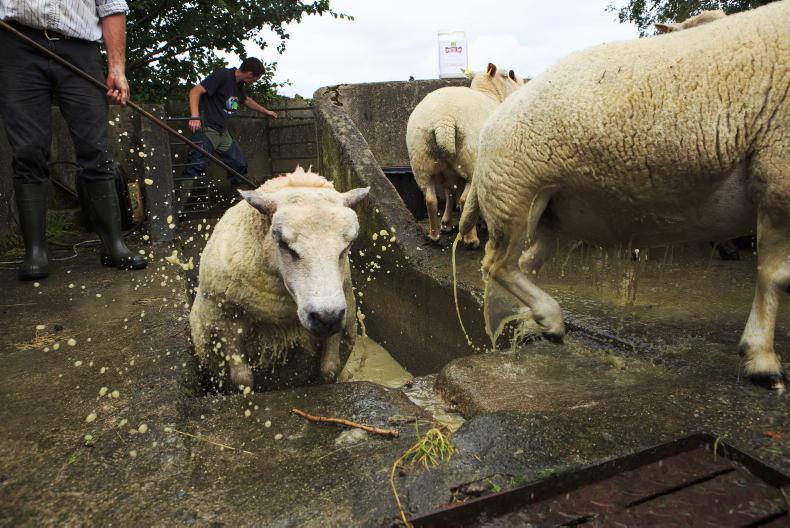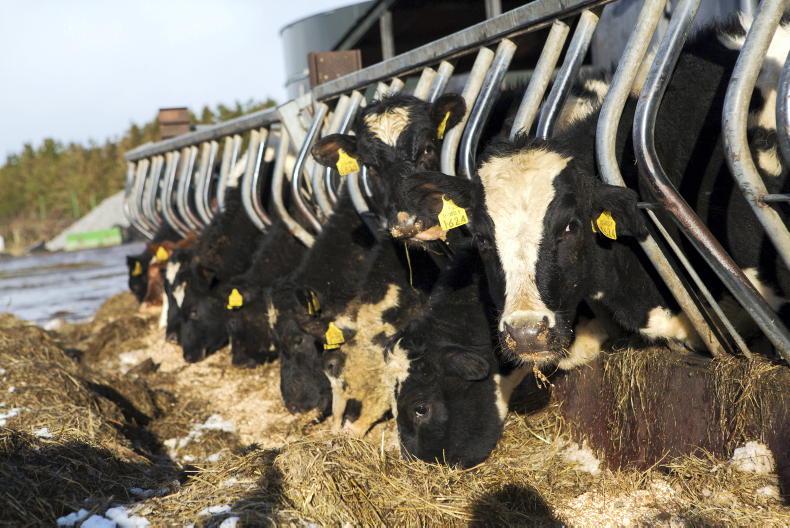There are a number of factors that should be taken into account to get the best response, while also avoiding any associated health issues. Management advice differs between enterprises.
For the dairy herd
Meal supplementation will be necessary if the main part of the forage in the diet reduces in quality. If round-bale silage or some other forage is introduced, you will have to supplement with meal usually to the tune of 5-6kg/cow (3kg morning and evening) if you are replacing grazed grass.
When increasing meal supplementation to slow down grazing, farmers should do so slowly. Start off with low amounts of meal and build up to an amount you are happy with.
According to research, for every 1kg of meal fed, grass eaten declines by 0.5kg DM in cows, but this substitution rate is much less when you have little or no grass in the diet, as you are wasting very little during grazing, and when grazing conditions are very dry. In dairy cows a response of 0.6kg of milk to 1kg of meal fed should be expected, but this depends on a number of factors.
Extra meal supplementation will increase milk production and slow down grazing rotation, however, meal on its own will often not be enough during a significantly dry period. Where offering silage, bales harvested from surplus paddocks should have a dry matter digestability in the mid- to high-70s and as such will limit a potential reduction in yield. Teagasc advises that bales should be harvested for at least three weeks before opening.
Creep feeding lambs or weanlings
Supplementing weanlings and lambs can accelerate daily liveweight gains and get animals to selling weight or slaughter weight quicker, thereby reducing livestock units and in turn grass demand. While this statement is accurate, we also need to be considerate of the fact that introducing meal supplementation is a cost to the system and as such feeding levels should be targeted at delivering the best response.
For example, supplementing early born lambs that have been weaned will allow them to reach slaughter weight quicker and can also underpin an increase in slaughter performance (killout, conformation score and fat cover). Teagasc research shows that the best response is achieved by supplementing lambs at a rate of 300-500g/head daily, but this depends on grass supplies and quality, with higher supplementation volumes warranted in cases. Be careful when feeding ewe lambs as these can tend to become overfat quickly.
Supplementing mid-season lambs can also be beneficial, but here consideration must be given to the target sale date and likely farmgate returns. Creep-grazing mid-season lambs ahead of ewes, while making ewes clean out paddocks, could be just as good as creep-feeding, and far cheaper.
This is not always a runner, however, but another aspect that could work is setting up a creep gate in a corner of a field where lambs can be supplemented in a restricted manner in troughs, rather than ad-lib diet with a high level of feeding that has the potential to quickly run into high costs. When supplementing lambs, farmers must be careful of them getting smothered within the creep feeder. Creep feeder A is far safer than creep feeder B.
Creep feeder A
Creep feeder B
The other option is weaning ewes early so that the best-quality grass can be targeted to lambs. This could also allow stronger lambs to be segregated for supplementation, which will again deliver a better financial return than feeding all lambs. Remember, water is critical to all animals on a high dry matter diet.
The same advice is relevant for weanlings. Creep-grazing calves ahead of cows is the best option where it can be successfully implemented.
Segregating beef cattle
Where grass quality or quantity is scarce, then there may be a benefit in supplementing store cattle with meal. The same advice applies as with lambs – target feeding to the animals that will deliver the best response. The first selection should be forward store cattle that are within four to six weeks of feeding. Offering 2kg to 3kg concentrates is the general recommendation, with higher levels of feeding questionable unless grass is in very tight supply.
Research at Teagasc Grange has shown that targeted meal feeding can be used to underpin performance, but where grass supplies are adequate then there is no financial incentive in feeding meals in early summer. Meal feeding where feed is scarce or where grass quality is declining later in the season should also bring about in the region of a half-unit increase in conformation and also deliver an improvement in killout and fat cover.
Be careful where feeding traditionally breed animals, as there will be a higher risk of them getting overfat. This is especially the case with light heifers that do not have the genetic potential to feed into heavier carcase weights.











SHARING OPTIONS